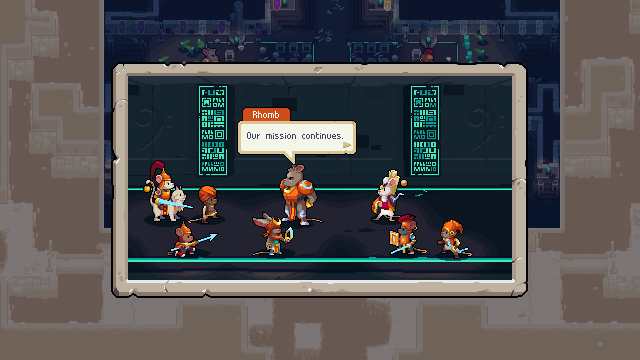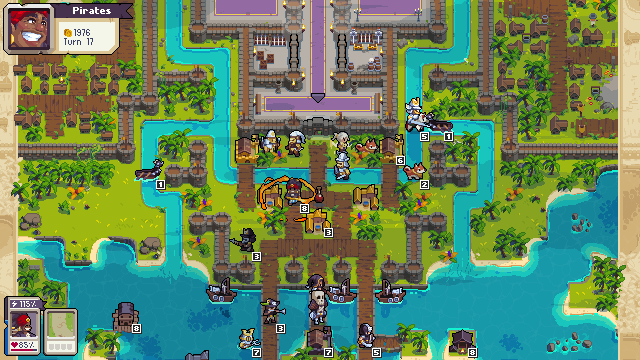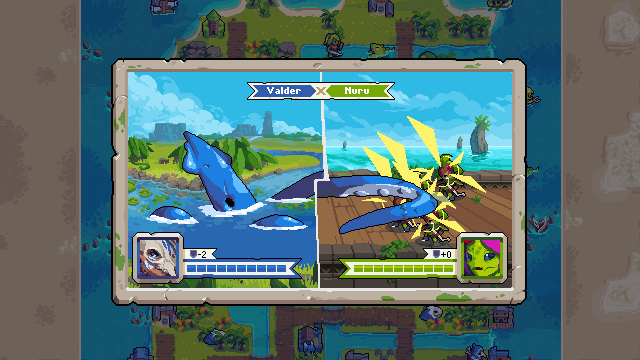
![]()
by
Evan Norris
, posted 16 hours ago / 767 Views
When Wargroove launched in 2019, it came as something of a surprise. Not many people expected an indie turn-based strategy game in the style of Advance Wars to be one of the finest titles of the year, but that’s precisely what developer Chucklefish delivered. Now, four years later, Chucklefish and co-developer Robotality are back to build off that strong foundation with Wargroove 2, a direct sequel to both Wargroove and its DLC Double Trouble. With greater visibility and higher expectations, can Wargroove 2 compete with the original, and other modern tactics games?
Set in the fantasy world of Aurania, three years after the near-catastrophic events of the first game, Wargroove 2 opens with a mysterious new faction: a nation of mouse-folk called the Faahri. Intent on unearthing dangerous Cacophony artifacts — similar to the one that began the international crisis three years prior — the Faahri run afoul of several factions and leaders introduced in the first title. As the game progresses, new campaigns, tensions, and battlegrounds emerge, until all the through lines merge in a climactic finale.

The narrative in Wargroove 2 is excellent. If you value character development and epic, emotional storytelling, even if you’re lukewarm on tactics games, consider picking this one up. The main mode, Campaign, is populated with believable, nuanced characters and supported by several discrete adventures that eventually dovetail nicely with the overarching plot. What’s more, it succeeds in setting up both an interesting macro-level political conflict and multiple absorbing micro-level interpersonal conflicts. It also succeeds, somehow, in creating an experience that is cozy and funny on the one hand, and brutally honest about the cost of war on the other.
While the deep focus on storytelling in Wargroove 2 provides plenty of intrigue, humor, and pathos, it comes at a cost. In some instances it infiltrates and undermines the nuts and bolts of the game: turn-based tactics. A big part of the beauty of the Wargroove series, and strategy games in general, is receiving a prompt and a set of victory conditions and then finding your own way across the battlefield. At times in this sequel, however, the missions are slightly scripted, to support a particular plotline or revelation. At other times, missions unfold without any conflict at all — only dialogue between characters.
Ultimately, this is what keeps Wargroove 2 from eclipsing its predecessor. While it successfully iterates on mechanics introduced four years ago — adding a new and improved tiered “groove” system, five new unit types, and four new commanders — it doesn’t make meaningful strides in mission and map design. Indeed, judged by those elements, the sequel represents a small regression. Not only are a handful of missions regrettably linear, in service of the story, but maps in general are smaller and more compact, which limits their tactical potential.

That said, there are still plenty of scenarios throughout that support player agency and demand long-term strategic thinking. Some stages are set in the “fog of war” where securing neutral watchtowers is essential, while others are heavy on aerial or marine combat. Still others require players to transport units via conquered portals, or convert naval units into ground troops to push toward the exit. One of the finest individual missions, which takes place in the middle of the “Dark Skies” campaign, tasks players with storming an enemy stronghold while rescuing villagers along the way. If you’re quick enough, you can unlock secret sub-commanders to fight by your side.
This collection of diverse and rewarding scenarios is paired with a gentle, encouraging learning curve that guarantees players are brought up to speed on unit and terrain types, plus the ins and outs of grid-based movement, as efficiently as possible. Wargroove 2 is a strategy game that never feels overwhelming, despite dozens of unique units, environments, and buildings — not to mention all the critical hit conditions and advantage/disadvantage calculations among them. It’s a wonderful mix of accessibility and tactical depth.
It’s also wonderfully substantial. Like Wargroove before it, Wargroove 2 is absolutely overflowing with content, from its 30-hour Campaign mode, to its brand new rogue-like mode Conquest, to its returning map and campaign editors. If you somehow manage to exhaust all these singe-player options, you can pivot to the game’s co-op and multiplayer modes, available locally or online for up to four players. At $19.99, the value proposition for Wargroove 2 is absurdly high.

The game’s production values are quite high as well, particularly for a smaller-scale indie release. Wargroove 2 boasts the same winsome, defined pixel art as the original, which includes expressive character portraits and fluid combat animations. While its graphical identity hasn’t changed much, its musical identity has shifted somewhat, due to new composer Dale North (River City Girls 2, RWBY: Arrowfell). By using elements from the main theme in each individual commander’s anthem, North has achieved a remarkable continuity across the soundtrack.
Unlike 2019’s Wargroove, which came out of left field, Wargroove 2 has something of a legacy to uphold. The good news: this sequel shines almost as brightly as its predecessor, thanks to diverse mission types, accessible gameplay, a wealth of single-player and multiplayer content, and lovely art and music. It doesn’t quite surpass the original, because its deep focus on storytelling and character development at times undermines player agency and decision-making, but it does rank among the better modern tactics games. Here’s hoping for Wargroove 3.
This review is based on a digital copy of Wargroove 2 for the NS, provided by the publisher.
Read more about our Review Methodology here
More Articles
>>> Read full article>>>
Copyright for syndicated content belongs to the linked Source : VGChartz – https://www.vgchartz.com/article/458717/wargroove-2-ns/




























![Forest ecology cannot be reduced to arithmetic, says M.I. Varghese [Interview] – Mongabay-India](https://earth-news.info/wp-content/uploads/2025/12/328946-forest-ecology-cannot-be-reduced-to-arithmetic-says-mi-varghese-interview-mongabay-india-120x86.jpg)


